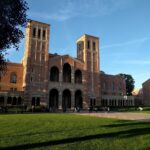Shakespearian Dystopias
Chicago, Ill.— A recent Modern Language Association (MLA) panel hosted by the Division on Shakespeare asked “What Does Science Have to Do With Shakespeare?” According to Professor Henry Turner of the University of Wisconsin at Madison, if the question encompasses attitudes toward science, “then the answer to [the] question is: quite a bit.” He listed many areas on which Shakespeare’s work touches, including “cosmology, medicine, mathematics, meteorological phenomena….astrology, and other so-called ‘sciences.’”
Other panelists listed numerous examples of scientific and mathematic reasoning woven throughout William Shakespeare’s works, including
• four silent figures dancing, which serves as an allegory for Galileo Galilei’s discovery of four moons around Jupiter;
• neoPavlovian training in the Tempest;
• and humans pretending to be machines.
Referring to the Automata performance, Professor Scott Maisano of the University of Massachusetts at Boston said, “With this theatrical coup… Shakespeare demonstrates that what we recognize as a human being is not that structure of limbs that we call a body, but something irreducible to such organic material.” Similarly, Professor Paula Blank argued that Shakespeare explored how humanity itself defies measurement. “Shakespeare’s rhetoric of measurement exposes more often than not the incommensurability of the quantification of human experience,” the College of William and Mary professor said. She continued, “Shakespeare participates in a very old tradition of philosophical skepticism centered on faulty or unverifiable measures,” in which “philosophers of science continue to ask what sort of information is an instrument capable of giving us.”
According to Professor Blank, the philosophy of science may epistemologically predate modern science. This is important because, she argues, “The philosophy of science is not an afterthought or belated commentary on modern science.” Rather, it explores the complexities of measurement, limitations of understanding, the purpose of science, and whether certain phenomena can or should be quantified.
Tempest as Dystopia
Shakespeare’s commentary on science and society was so profound that the famous author Aldous Huxley copied themes wholesale from the Tempest in order to construct the American dystopian classic A Brave World, argues professor Maisano. “Upon a closer reading of Brave New World, it turns out that Aldous Huxley did not just take the title from Shakespeare’s last play—he imported everything from the Tempest,” he said. Among the Tempest elements transcribed into Huxley’s futuristic world, he argues, are
• the swift-teaching method that Prospero perfects on Miranda;
• attempts to “artificially engineer social harmony;”
• an authoritarian leader who refuses to let others look at his book;
• and a “neoPavlovian” scene in which characters are tempted and then punished with loud sounds and
electricity or lightning.
“All of this goes to directly into making the World State,” said Maisano.
Shakespeare’s writing also sows the seeds of the authoritarian government’s downfall in Brave New World. “ …In 75 years Huxley hopes that a mouse-eaten copy…placed in the hands of a savage on an Indian reservation was all that it takes to bring down the day-after-tomorrow dystopia of genetic engineering, mass culture, and a benevolent totalitarianism,” argued Maisano. He also commented that Aldous Huxley viewed Shakespeare as “a sacred text to be read, ideally, in solitude.”
Bethany Stotts is a Staff Writer at Accuracy in Academia.




